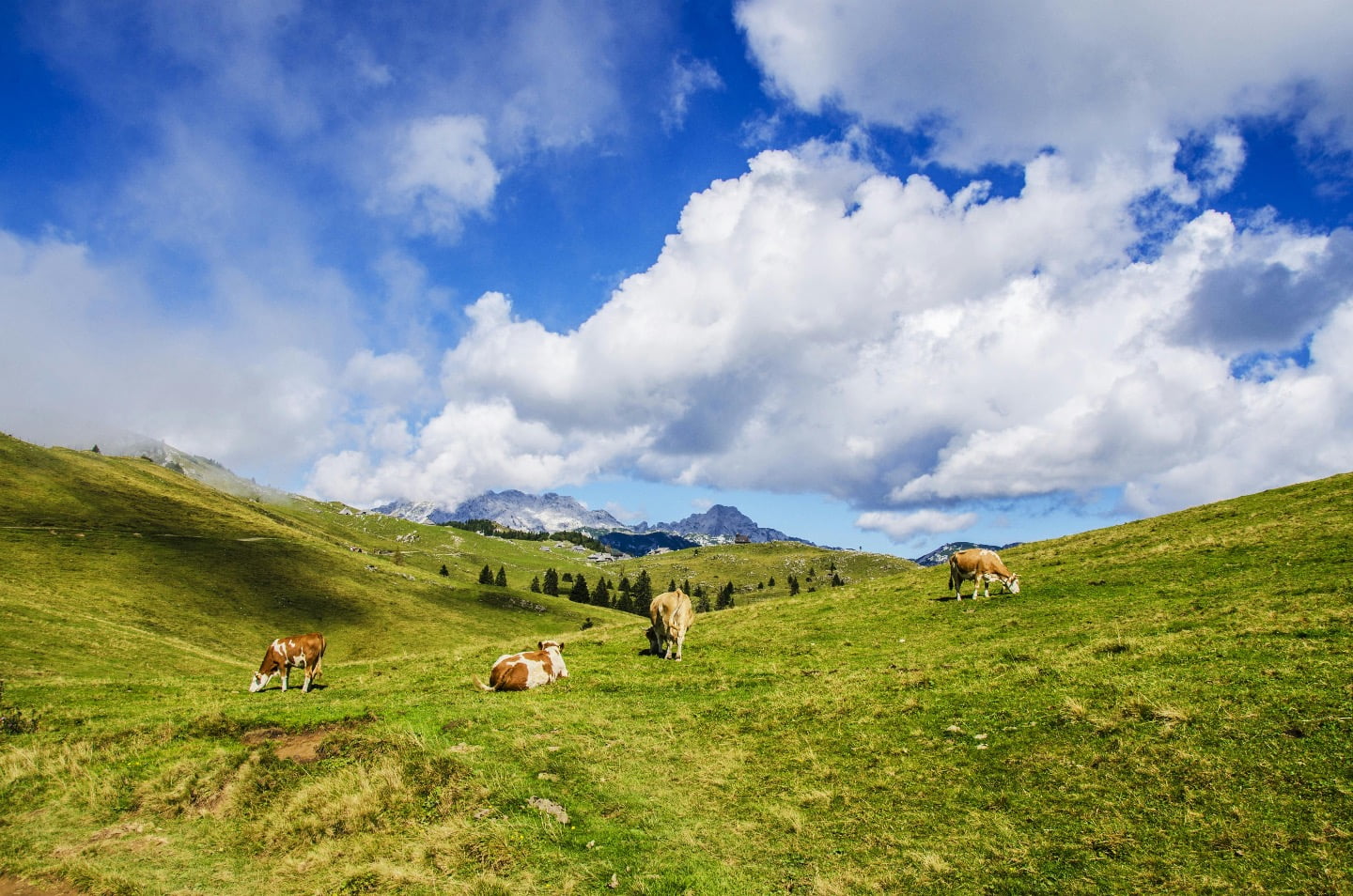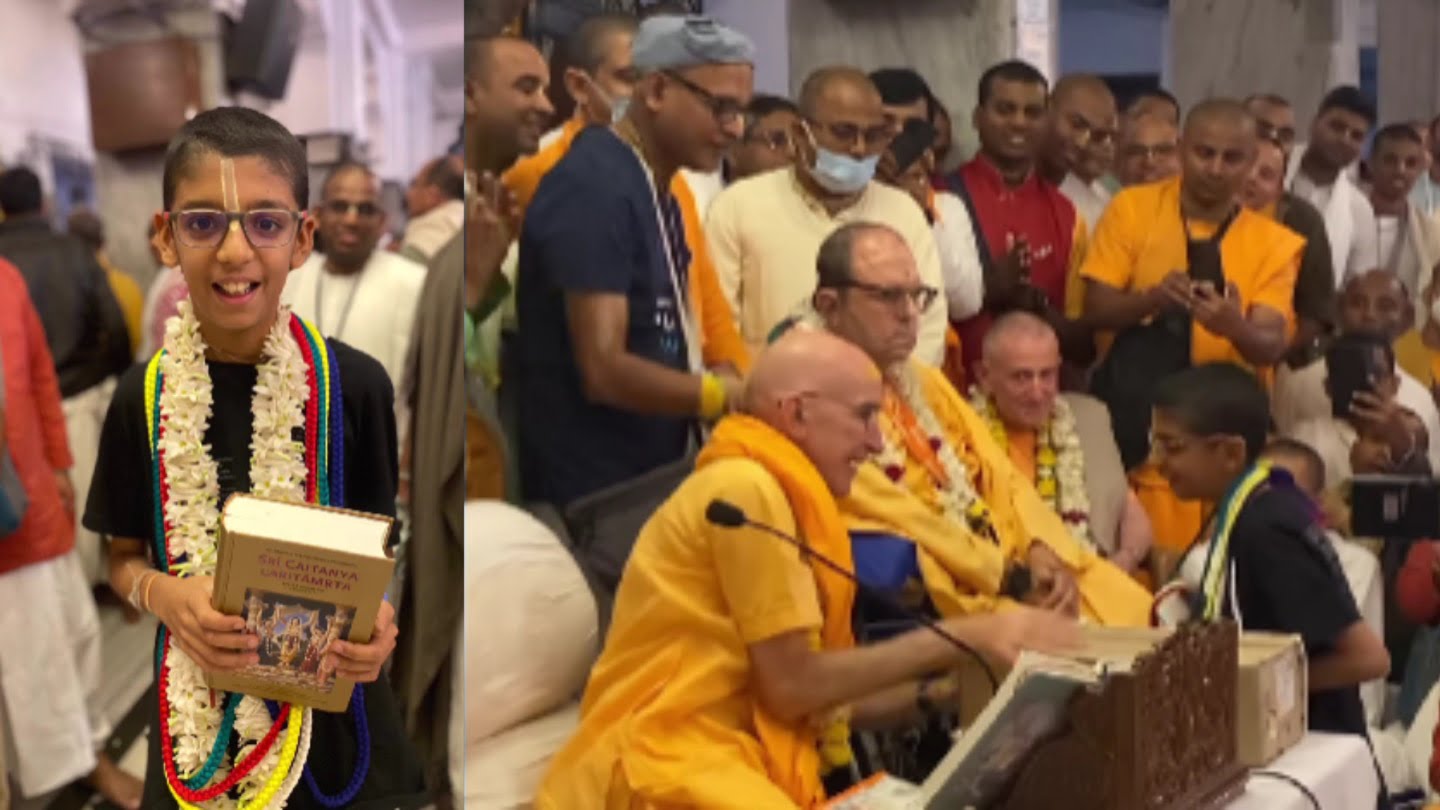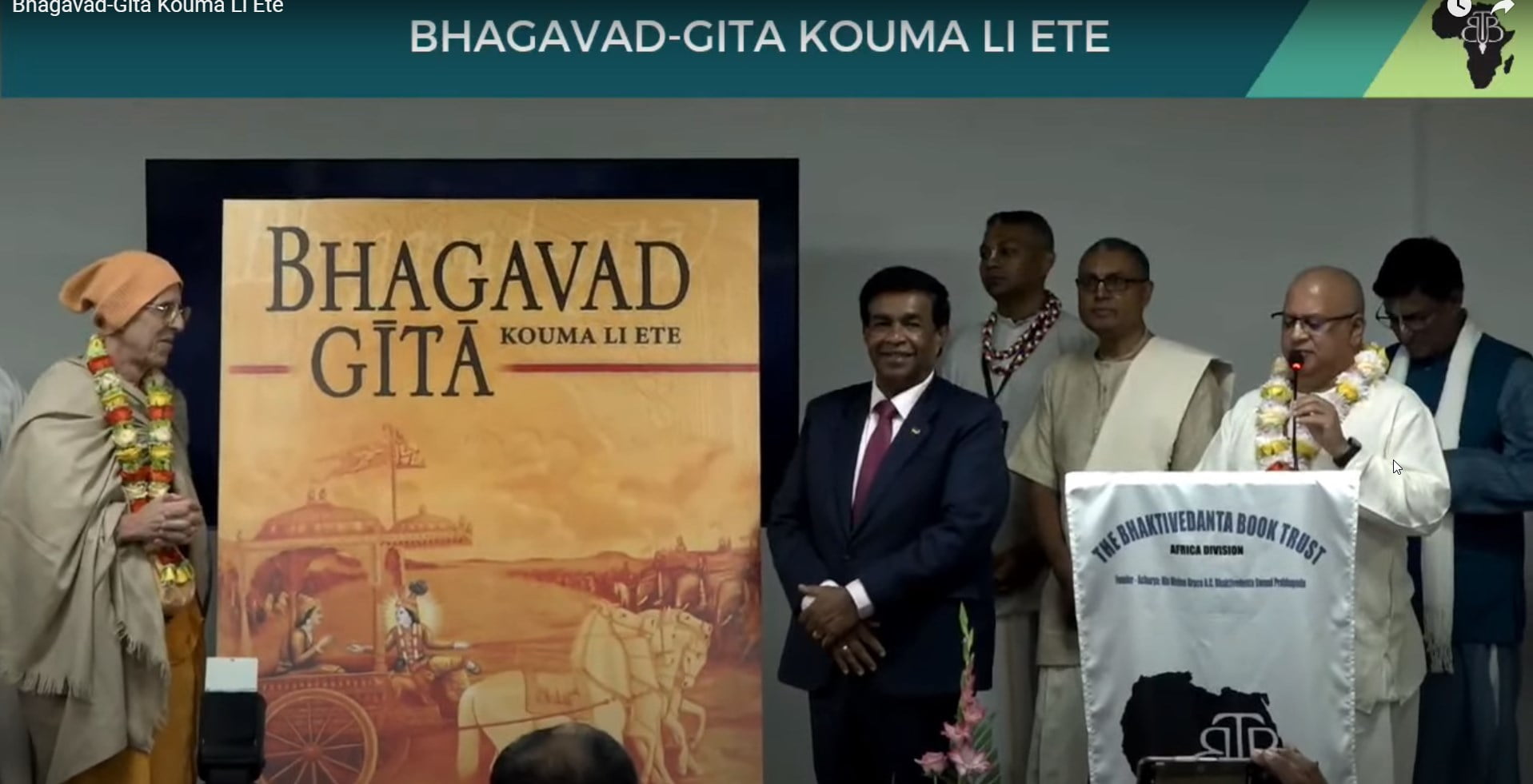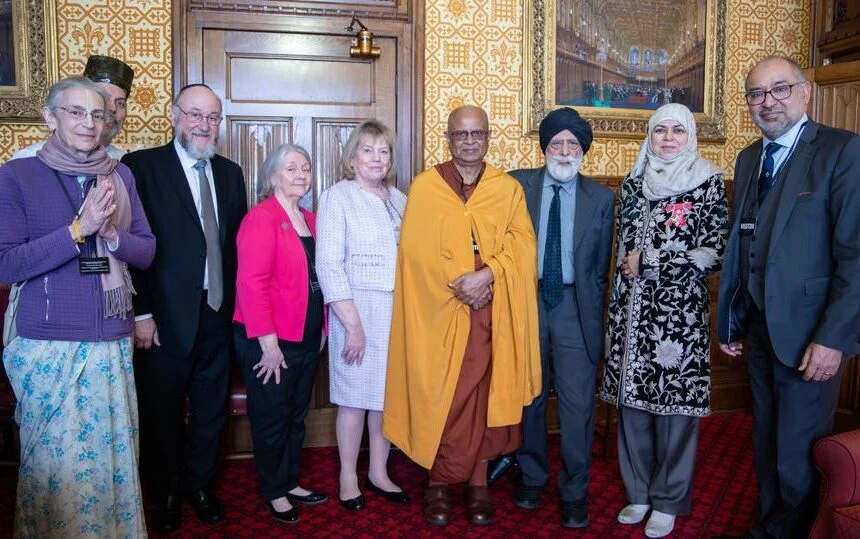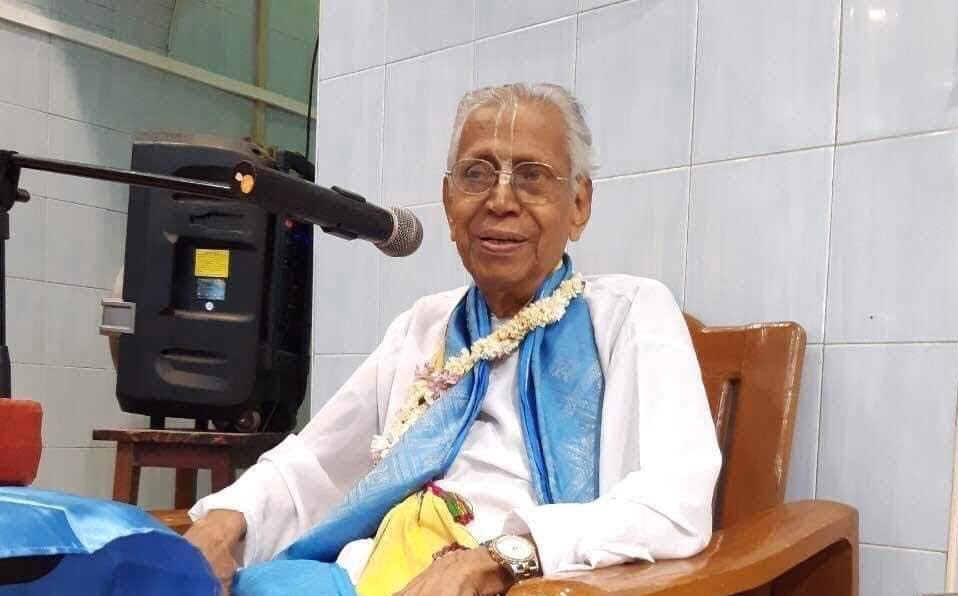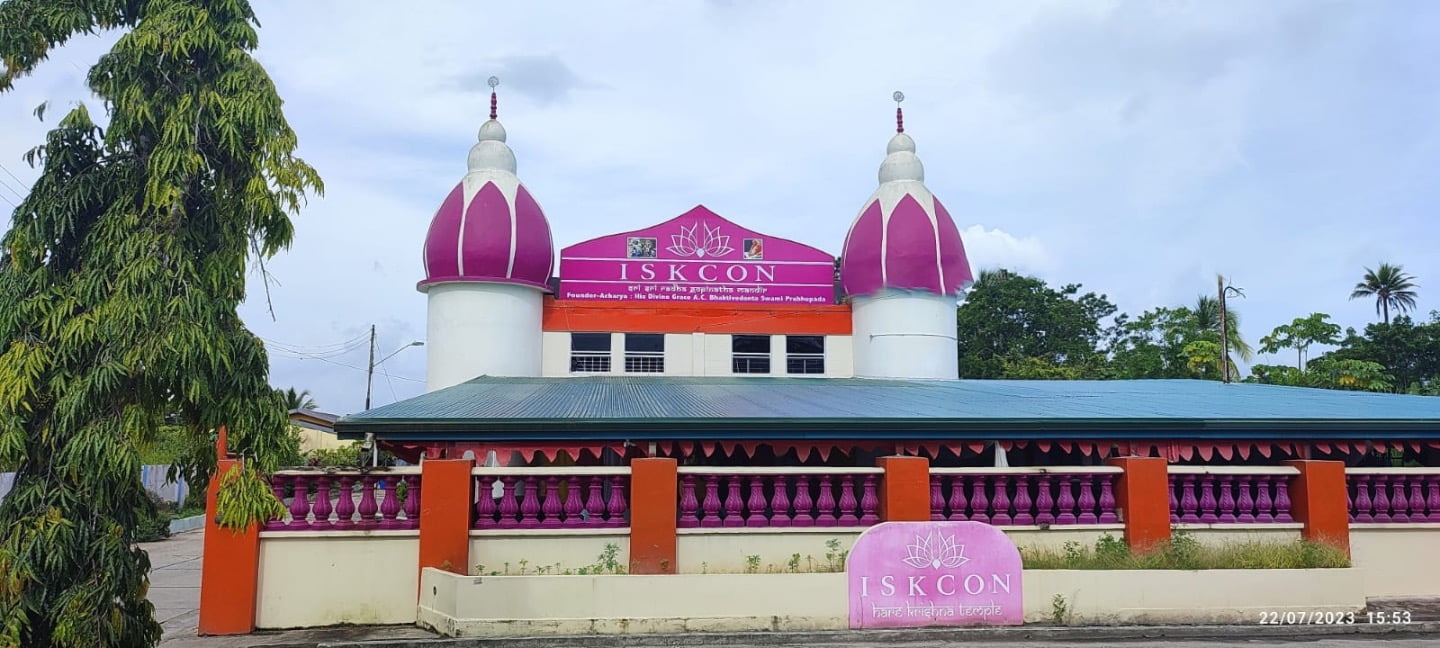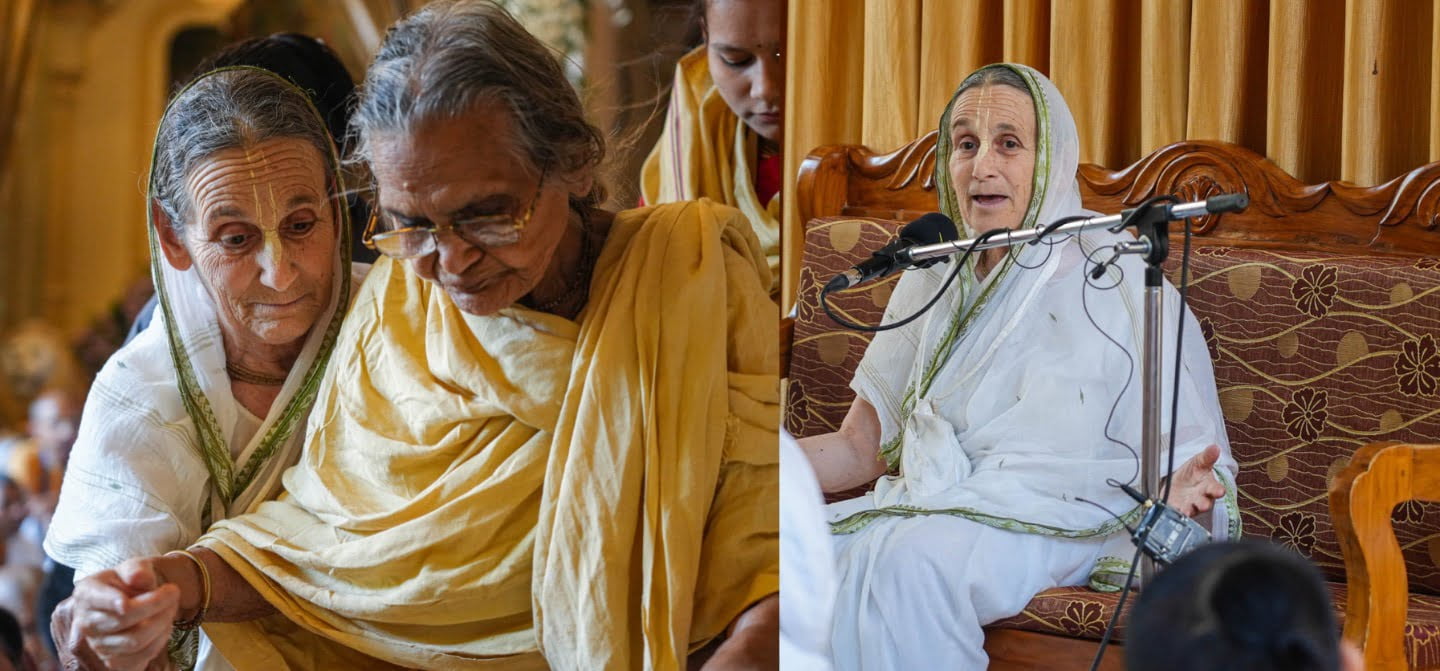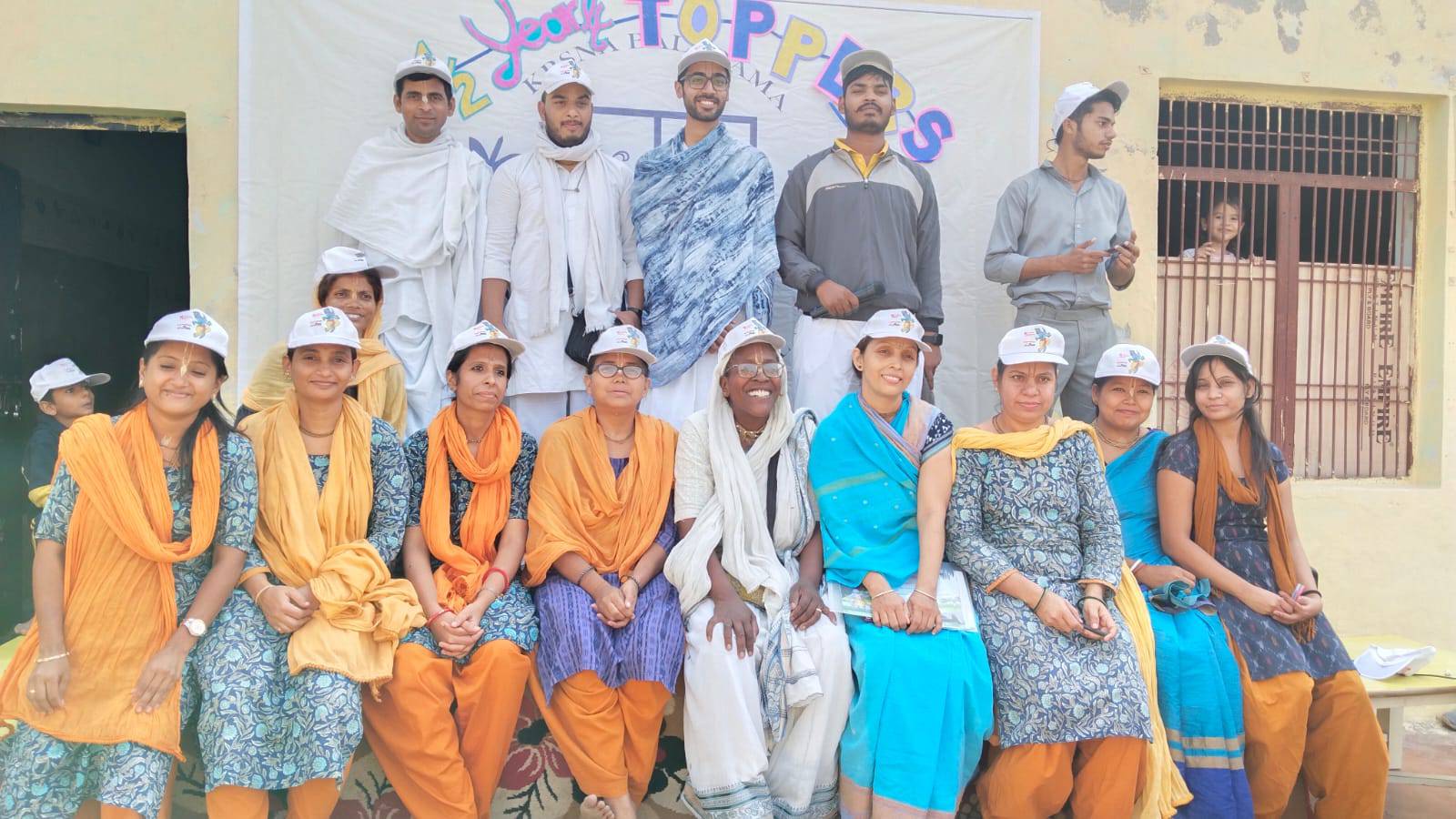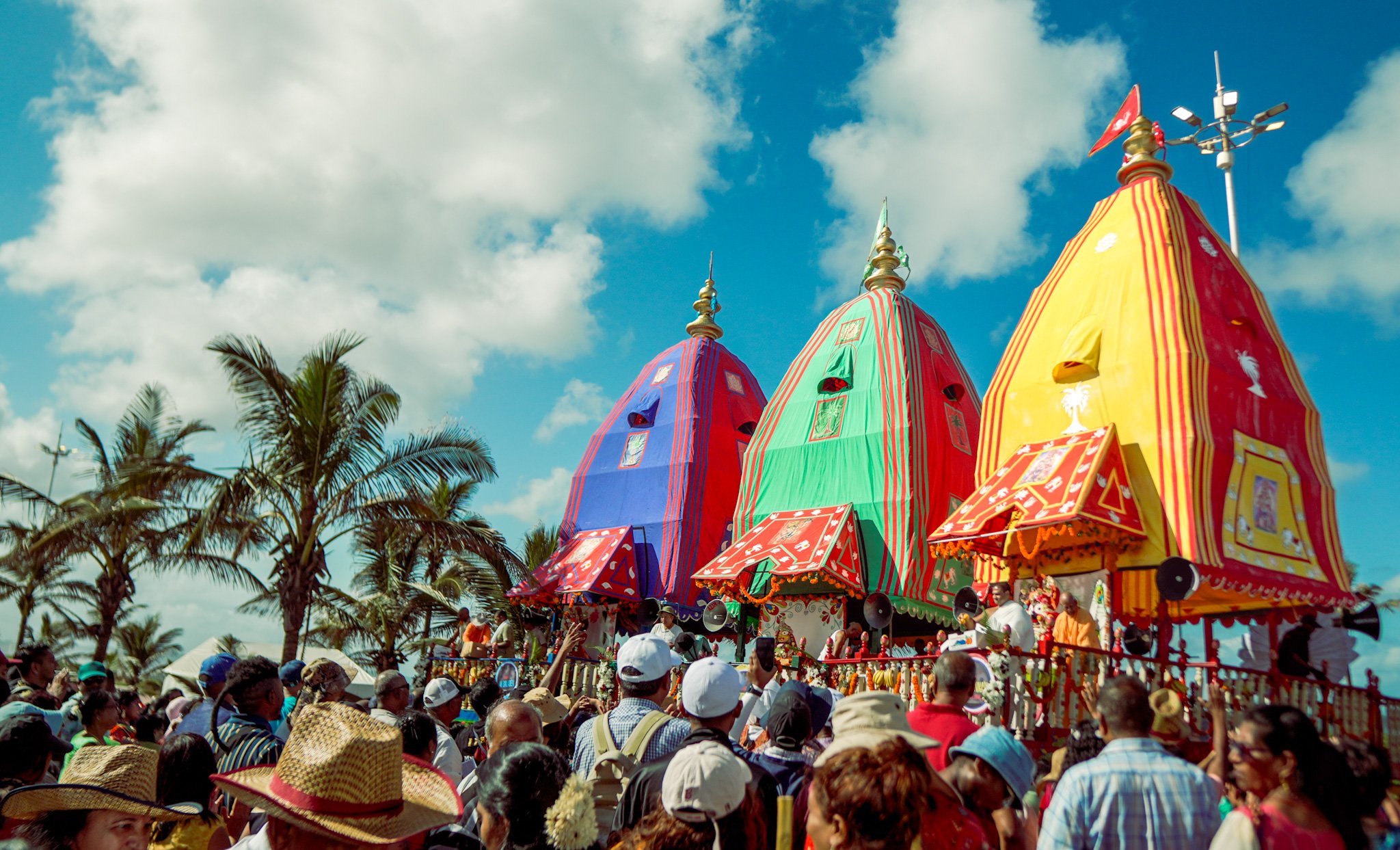Bhaktivedanta Institute for Higher Studies Holds Virtual Cosmography Workshop
By Prisni Devi Dasi | Dec 19, 2020

In 1976, Srila Prabhupada instructed the founding members of the Bhaktivedanta Institute “to build a model of the universe that could later be built full size at the future Mayapur Temple and Planetarium complex.” To help broadly facilitate Srila Prabhupada’s directive, the Bhaktivedanta Institute for Higher Studies (BIHS) in Gainesville, Florida, recently hosted its second cosmography workshop with the title, “Models and memes and maps: A modern journey through ancient cosmography.” It attracted participants online from around the world over the weekend of November 21-22, 2020.
The BIHS workshop was designed to facilitate intellectual discourse engaging Srimad Bhagavatam 5th Canto cosmographical models frequently discussed within ISKCON. The workshop explored historical and contemporary models along with new research that enhances the rich devotional culture engaging this topic. The Director of the BIHS, Brahmatirtha das (MS Geology), one of the founding members of the Bhaktivedanta Institute who participated in the original 1977 “Life Comes From Life” conference held in Vrindavan while Srila Prabhupada was present, explained, “We are striving to elevate the discourse to a level suitable for publication in appropriate academic circles so that the efforts of the many Vaishnavas can be appreciated by the intellectual communities while remaining loyal to our tradition.”
Following Brahmatirtha das’ welcome address, Pracarananda das (PhD, Geology) opened Session 1 with a presentation “On models, memes, and maps,” which helped set the workshop theme analyzing criteria for a productive model. The next speaker, Janakirama das (PhD, Religion), spoke about “Historical perspectives on cosmological complexities.” He argued that various cosmological passages in the Srimad-Bhagavatam suggest meditative “complexity” coupled with a “spirit of discovery.”
Sthita-dhi-muni das (PhD, History of Science) wrapped up the opening session with a presentation on “The Legacy of Jyotir Veda” examining “jyotisha and Puranic cosmology discourse in a traditional context.” The presentation explained that textual passages historically identified with the tradition illustrate how various present-day concerns frequently expressed within ISKCON often involve “apparent discrepancies between esoteric” descriptions identified with the Puranas versus “exoteric accounts” drawn from mathematical astronomy that have also “proven a dynamic element of this ancient legacy.”
To put it directly, apparent dichotomies between celestial descriptions of an expansive Bhu-mandala plane alongside with descriptions of an observable and mathematically quantifiable spherical earth, are likewise found in textual accounts firmly rooted in classic Vedic civilization. Many of these works are attributed to noted jyotisa pandits recognized as leading figures in the global history of mathematics and astronomy. Examples of these texts date back well over a thousand years prior to the rise of the “new” sciences identified with European origin.
When considered this way, perhaps there is nothing new under the sun. Not only has this topic been thoroughly acknowledged by Bhaktisiddhanta Sarasvati Thakura in his scholarly work promoting Sanskrit mathematical astronomy, but more recently within ISKCON, Sadaputa das described at length how both views can be found embedded within a unified tradition identified with Vedic literature. In the pioneering BBT publication, Vedic Cosmography and Astronomy (1990), Sadaputa argued that historical facts such as these invite fresh examination of the “proper understanding of the nature of space, time, and matter, as described in the Srimad-Bhagavatam, and a corresponding understanding of the Vedic approach to describing and thinking about reality.” (p. 3)
Participants in the afternoon’s Session 2subsequently broke into working groups designed for considering fresh approaches intended to enhance the role of ISKCON scholars. Among the
questions discussed by each group were, “What are the criteria for making a good model?” and “How can we make our voice relevant within ISKCON and its outreach?”
On the second day, Session 3 examined a selection of both historical and contemporary models active within ISKCON. Prishni devi dasi (BIHS secretary and Richard L. Thompson Archives) opened with a presentation on the “‘Standard Accommodation’ model as cultural legacy.” It offered a summary overview of what scholars have defined as the dominant model on the Indian subcontinent during the Middle Ages within jyotisa and Puranic discourse. Radha Mohan das (BIHS researcher and Bhaktivedanta Manor communications secretary) followed with an overview of “Richard L. Thompson’s 4 models, and beyond.” He introduced a variety of sub-models drawn from Sadaputa’s Mysteries of the Sacred Universe (2000), which offer potential for further appreciating the complexity encoded within Puranic cosmological descriptions. Pavaneshwar das (MS, Electrical Engineering) next spoke about his book, Bhagavata Cosmology (2018), offering a study of Fifth Canto cosmology that draws upon Vadiraja Tirtha Swami’s treatise, Bhugola Varnanam (16th Century). Rsiraja das (MS Chemistry) offered an introduction to his influential work, Mystic Universe (2016), that highlighted the need to appreciate the theory behind the model which facilitates a conceptual understanding of the Puranic universe. Sulabha das ended the morning session with a video that compared Puranic descriptions of the Bhū-maṇḍala earth-plane with a variety of identifiable geographic features similarly described in the Puranas.
The final session provided a platform for more recent research while facilitating peer-review feedback. Vrindavana Priya das’s talk on “Consciousness and Cosmology” described a consciousness centered approach to understanding the nature of the cosmos that drew upon insights from Rsiraja’s research. Prem Gauranga das (Mechanical Engineering) discussed his paper, “Mathematical Model of the Cosmos based on the Bhagavata Purana,” which highlighted information embedded within the text verifiable through human experience. A research proposal by Vaishnav das (PhD Astrophysics) titled “Pravaha winds as the missing mass in the universe,” explored the potential for testing this construct utilizing gravitational wave astronomy.
Three physicists from the BIHS research team closed the seminar with presentations in the final afternoon session. The topic “Bhu-mandala as the Horizontal Plane,” presented by Murali Gopal das (PhD, Physics) examined the possibility of a coherent narrative that would incorporate several features of Bhu-mandala as described by various models under consideration. Dvija Govinda das (PhD, Physics) discussed an “Investigation of connections between Puranic and Siddhantic sizes of the Universe.” He proposed “proportionality” and “total distance traveled” as part of a framework illustrating correlations between the vertical dimension of the universe described the Srimad-Bhagavatam and mathematically quantifiable data pertaining to cosmic distances.In the workshop’s final talk, “An Embedded Time Dimension in the 5th Canto,” Doug Watson (PhD Physics) proposed that 5th Canto spatial mapping of Bhu-mandala might not arise solely from a fixed point in time. Rather, time itself could provide an additional dimensional element.
Many attending the BIHS workshop expressed a desire to continue discussions in ongoing work groups intended to fine-tune analyses of Vedic cosmology. In his parting words to the international participants, BIHS Director Brahmatirtha Das offered his invitation to “visit our new BIHS headquarters… situated near the University of Florida in an historically preserved neighborhood. Be our guest and enjoy our 3000+ book library, gardens, and beautiful walking areas.” Brahmatirtha concluded by gratefully acknowledging that the BIHS had been able “to secure use of this new facility with the generous support of Hridayananda Das Goswami.”
* * *
To review a copy of the 2020 BIHS program brochure, please see: bit.ly/BIHS_Program_Brochure_2020



